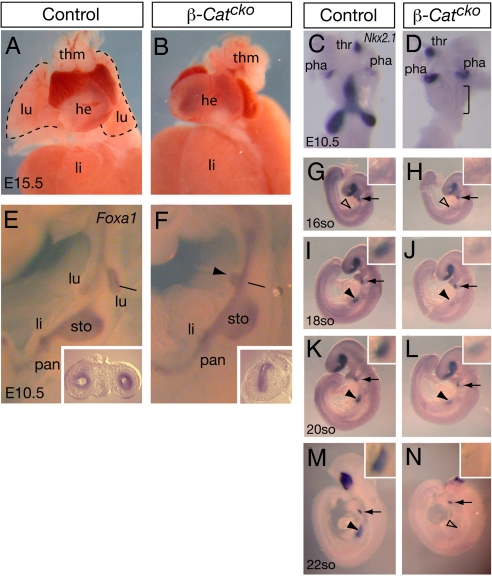Fig. 2.
Inactivation of β-Catenin leads to a failure in maintaining the respiratory fate. (A and B) Trachea and lung are absent in β-Catcko mutant at E15.5. (C, D, and G–N) Nkx2.1 expression as detected by RNA in situ hybridization. Ventral (C and D) or lateral (G–N) views are shown. Arrowheads in G–N indicate regions that are enlarged in the insets of each panel, with filled arrowheads indicate presence of expression and open arrowheads indicate absence of expression. Arrows indicate Nkx2.1 expression in the thyroid as a control that the staining intensity is equivalent in all embryos. Nkx2.1 is not detected in the prospective trachea/lung region in either the control or mutant at the 16-so stage. Later, at the 18- and 20-so stages, its expression is detected in both genotypes, although at a lower intensity in the mutant. This expression is absent by the 22-so stage in the mutant. (E and F) Foxa1 expression as detected by RNA in situ hybridization outlines the endoderm in E10.5 embryos. Lateral views are shown. Lines indicate the approximate level of transverse section shown in the insets. In the β-Catcko mutant, there is a common foregut tube and an aberrant bud is observed along the ventral midline of the presumptive trachea/lung region (arrowhead in F). Abbreviations: same as Fig. 1 with the addition of pha, pharyngeal pouch; thm, thymus.

